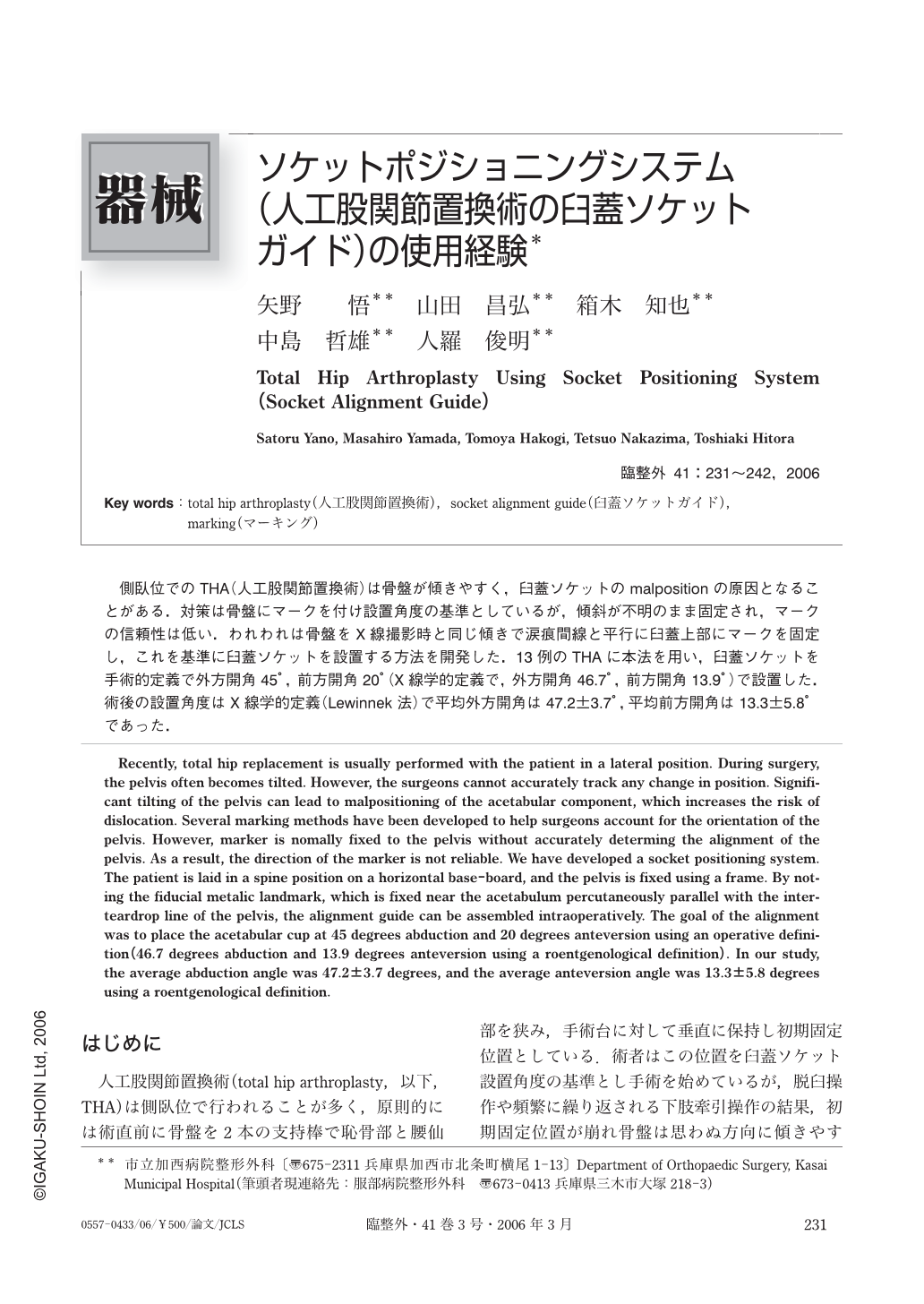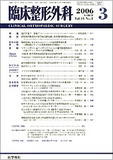Japanese
English
- 有料閲覧
- Abstract 文献概要
- 1ページ目 Look Inside
- 参考文献 Reference
側臥位でのTHA(人工股関節置換術)は骨盤が傾きやすく,臼蓋ソケットのmalpositionの原因となることがある.対策は骨盤にマークを付け設置角度の基準としているが,傾斜が不明のまま固定され,マークの信頼性は低い.われわれは骨盤をX線撮影時と同じ傾きで涙痕間線と平行に臼蓋上部にマークを固定し,これを基準に臼蓋ソケットを設置する方法を開発した.13例のTHAに本法を用い,臼蓋ソケットを手術的定義で外方開角45°,前方開角20°(X線学的定義で,外方開角46.7°,前方開角13.9°)で設置した.術後の設置角度はX線学的定義(Lewinnek法)で平均外方開角は47.2±3.7°,平均前方開角は13.3±5.8°であった.
Recently, total hip replacement is usually performed with the patient in a lateral position. During surgery, the pelvis often becomes tilted. However, the surgeons cannot accurately track any change in position. Significant tilting of the pelvis can lead to malpositioning of the acetabular component, which increases the risk of dislocation. Several marking methods have been developed to help surgeons account for the orientation of the pelvis. However, marker is nomally fixed to the pelvis without accurately determing the alignment of the pelvis. As a result, the direction of the marker is not reliable. We have developed a socket positioning system. The patient is laid in a spine position on a horizontal base-board, and the pelvis is fixed using a frame. By noting the fiducial metalic landmark, which is fixed near the acetabulum percutaneously parallel with the interteardrop line of the pelvis, the alignment guide can be assembled intraoperatively. The goal of the alignment was to place the acetabular cup at 45 degrees abduction and 20 degrees anteversion using an operative definition (46.7 degrees abduction and 13.9 degrees anteversion using a roentgenological definition). In our study, the average abduction angle was 47.2±3.7 degrees, and the average anteversion angle was 13.3±5.8 degrees using a roentgenological definition.

Copyright © 2006, Igaku-Shoin Ltd. All rights reserved.


